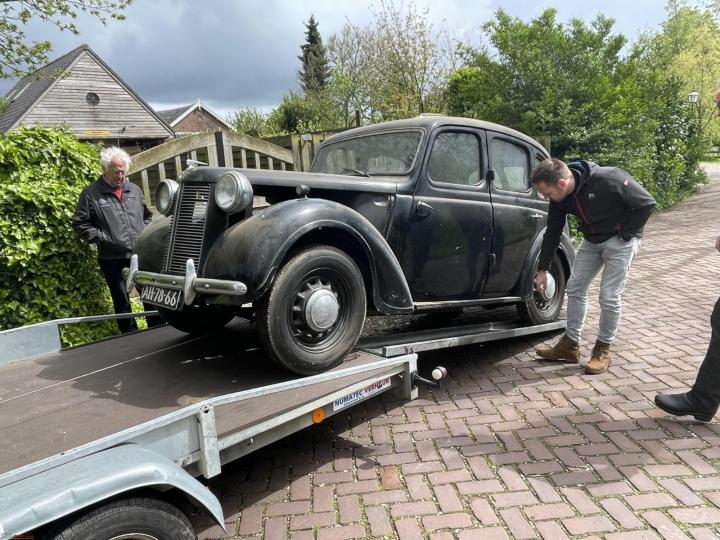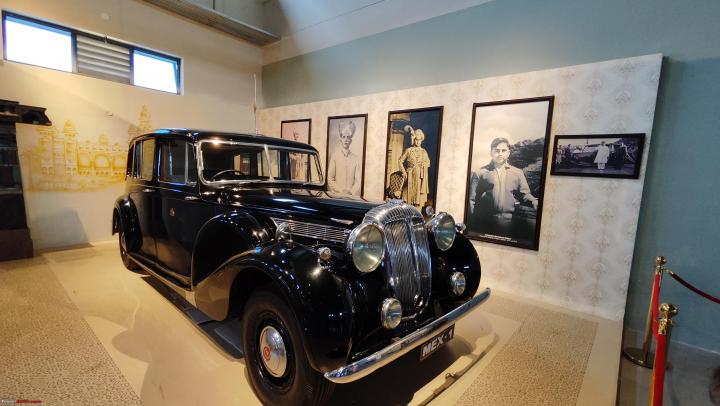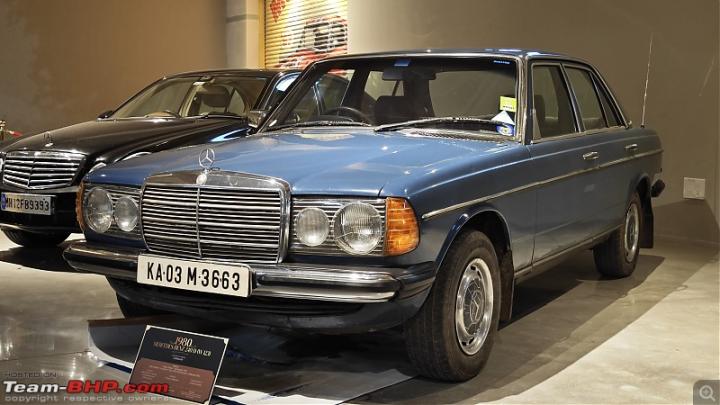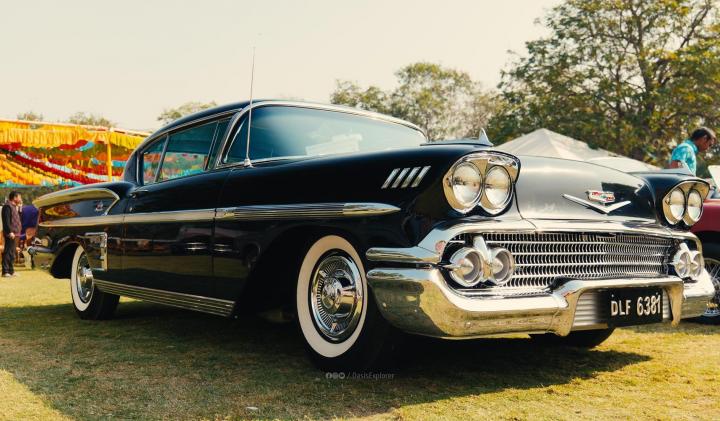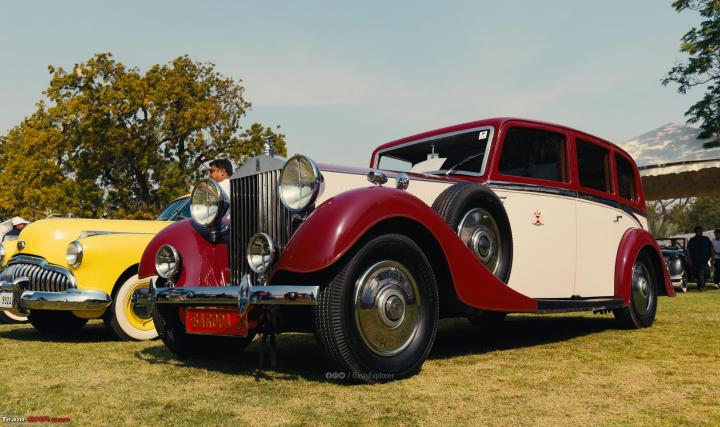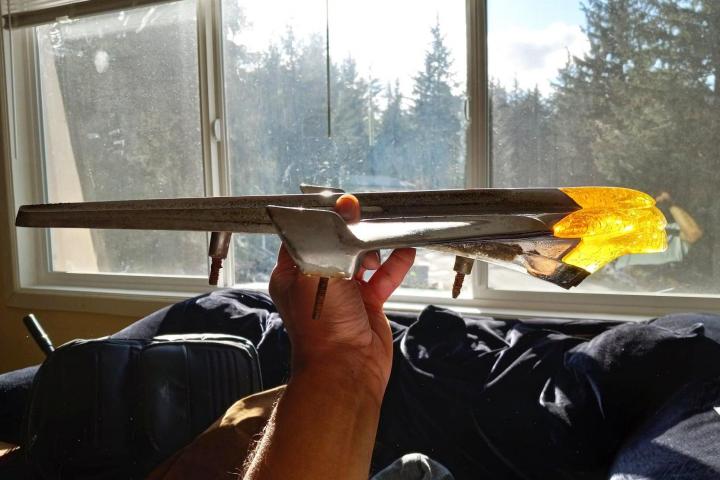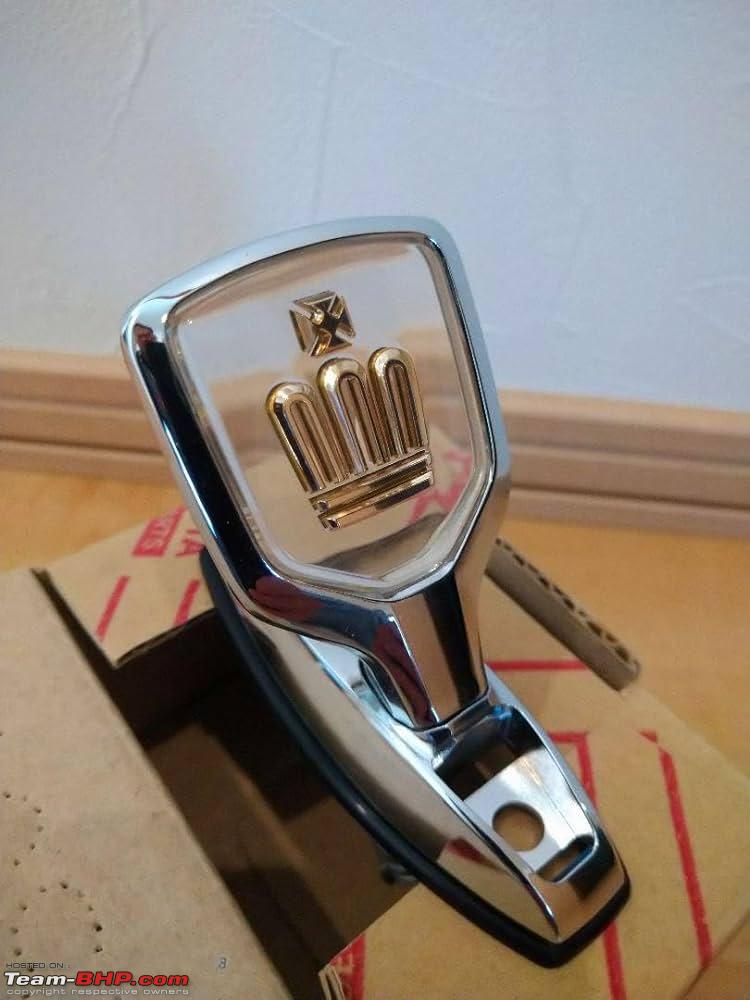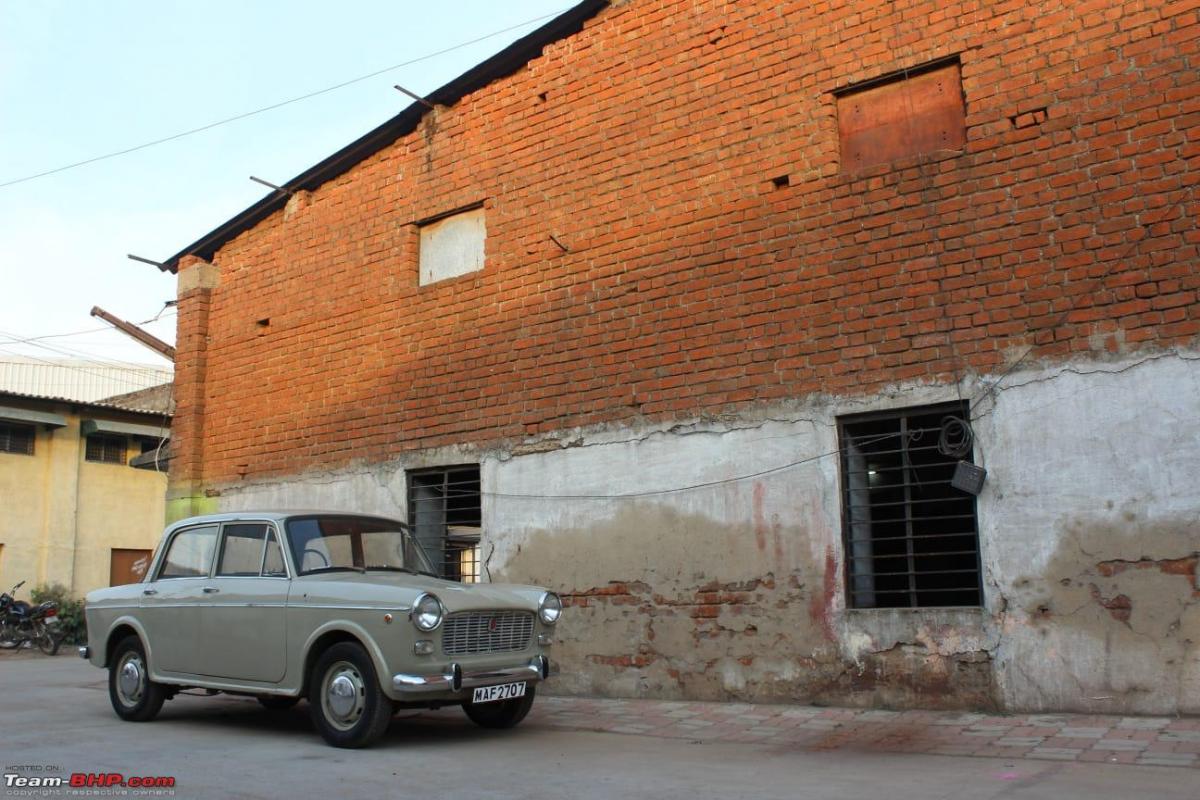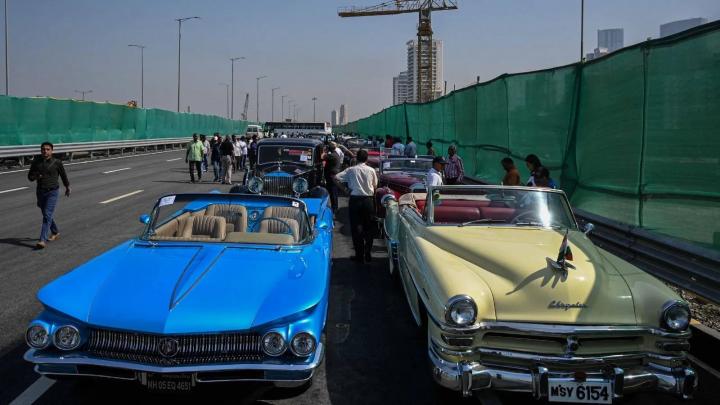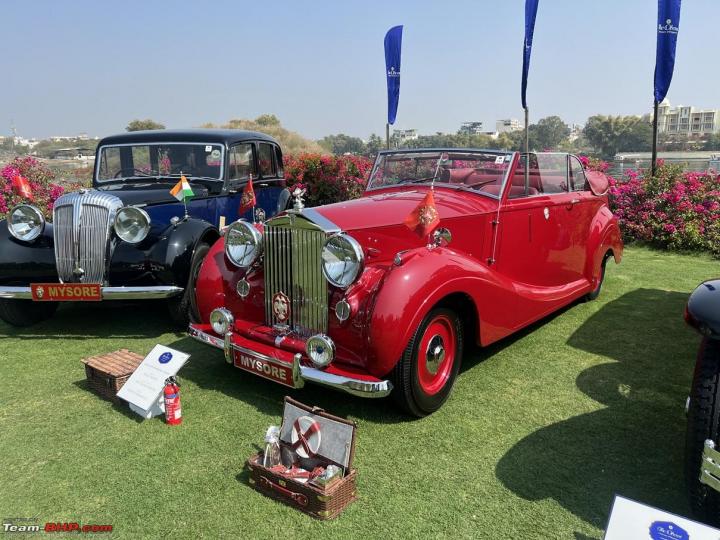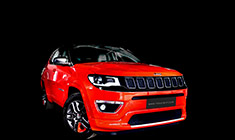News
Selling two vintage cars to an enthusiast who plans to restore them
They already owned an Austin. They acquired it some 40 years ago and have restored it themselves.
BHPian Jeroen recently shared this with other enthusiasts.
My good friend Berndt had decided to sell a few of his oldtimers. Berndt had asked me and two other friends, Marco and Kees, to come and help extract them from his garage. Those of you who follow this thread will be familiar with Berndt's garage. It is not easy to find anything in there, let alone get anything out.
The new owner showed up with his son and his granddaughter Mila, who was very excited about it all. They already owned an Austin. They acquired it some 40 years ago and have restored it themselves. Both of Berndt's cars are going to require some major work too. But nice to see these two cars go to an enthusiast who will restore them and make them road-worthy again.
We had the first car out and on the trailer within 25 minutes.

They drove off to take it home, we went for another round of coffee. Next, we started extracting the second car from the garage. It was parked all the way, stuck in a corner. We had to use a trolley jack to swing the rear out.

I was surprised to see the tyres still held their air when we pumped them up. Even more surprising, the brakes were still working. I had expected them to be completely seized. British engineering at its best!

After about an hour and a half the new owner returned with the trailer for oldtimer number 2. As we were about to load up on the trailer, a bunch of one-HP vehicles came pass!
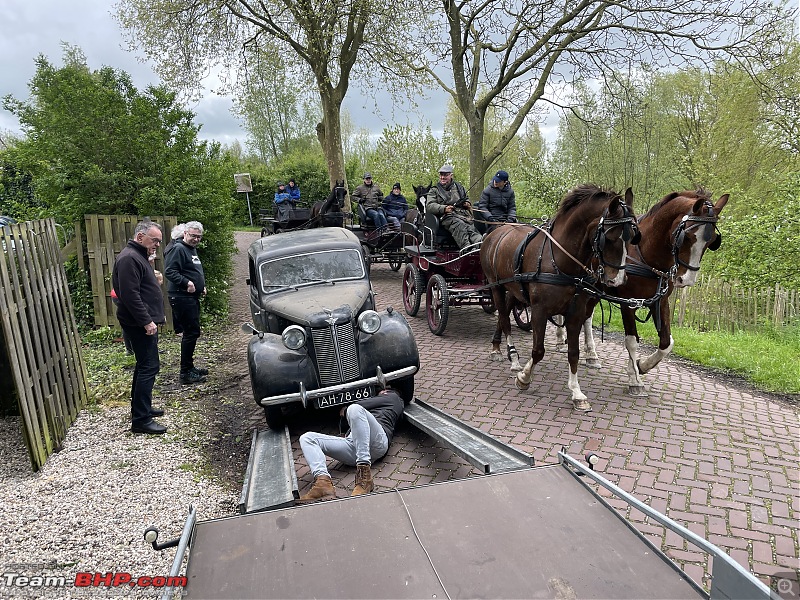
Nice old registration plate. Look carefully, it is mounted on a contraption that can swing. So if you lower the boot, the registration plate will swing and remain vertical and visible.

Myla insisted she would winch the car all the way up onto the trailer! Strong little girl, she just kept on going!


On it goes

Berndt has a couple of lockups where he keeps more cars. We are going to move some more of his cars. One of these currently hidden cars needs a new gearbox. Berndt being Berndt doesn't have a new gearbox, but he has several old ones. So we will be doing some swapping to see if we can find one that fits and works.
In the Netherlands cars over 50 years of age do not require an annual inspection APK (MOT) anymore. This last car still has its Dutch registration so as soon as it is road-worthy, all it needs is insurance, and can be driven once again. It will take some work as the head gasket was blown a couple of years ago.
Check out BHPian comments for more insights and information.
News
Visited the new Payana Vintage Car Museum on the outskirts of Mysuru
There are many old models on display from brands such as Fiat, Morris, Austin, Mercedes Benz, Willys, Toyota, Citroen and Hindustan Motors.
BHPian vsrivatsa recently shared this with other enthusiasts.
"Payana" - The Vintage Car Museum
A new Vintage Car Museum opened on the outskirts of Mysuru last week and I had the opportunity to visit this museum along with the family on the way to Mysuru today. This museum has been established by Dharmasthala Dharmadhikari D. Veerendra Heggade and is now open to the public. The structure itself resembles the silhouette of a tyre!

Payana - The Vintage Car Museum

A zoomed-out view of the Car Museum

Intro Flag
The museum hosts a huge set of vintage cars on display from brands such as Fiat, Morris, Austin, Mercedes Benz, Willys, Toyota, Citroen and Hindustan Motors.
The timings for the museum are from morning 9-00 AM until 8-00 PM in the evening and there is an entry charge of ₹50 per head for adults and it's free for children up to the age of 12 years.

Guidelines
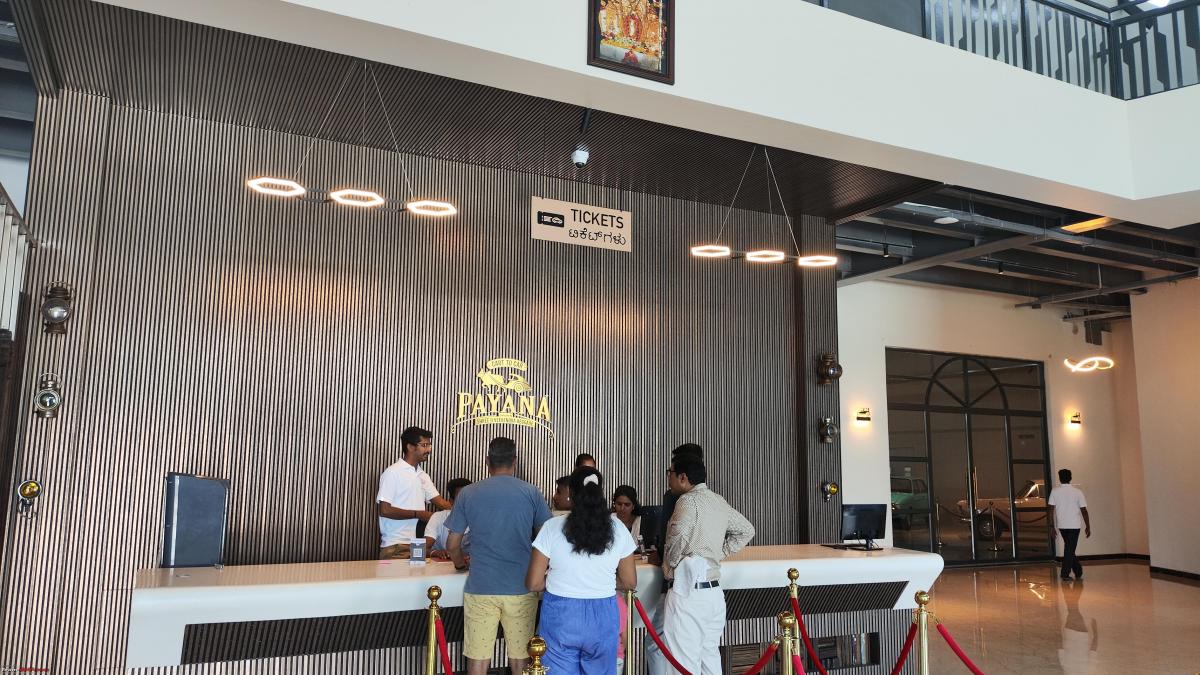
The Ticket Counter
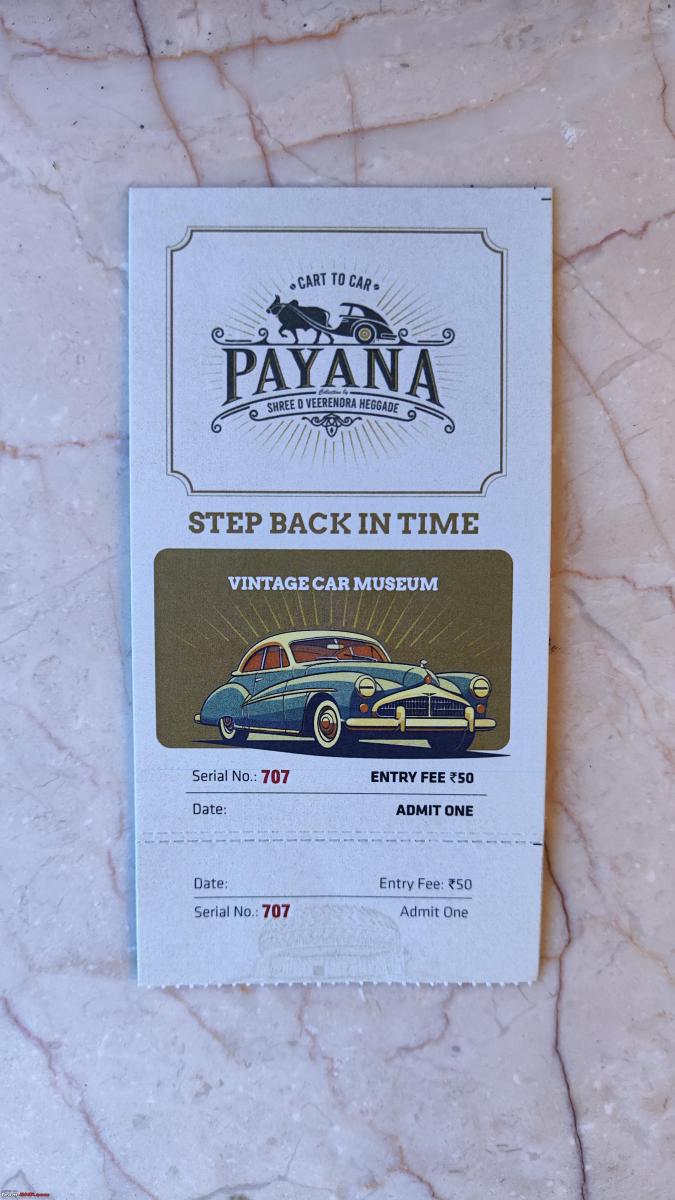
The Ticket
Right at the entrance is placed a car which was used by Dr Veerendra Hegde himself - the Standard Herald:

Standard Herald used by Dr Veerendra Hegde during his College Days

At the entrance - Evolution of Wheels

The most Rudimentary Wheels


Spacious Hall
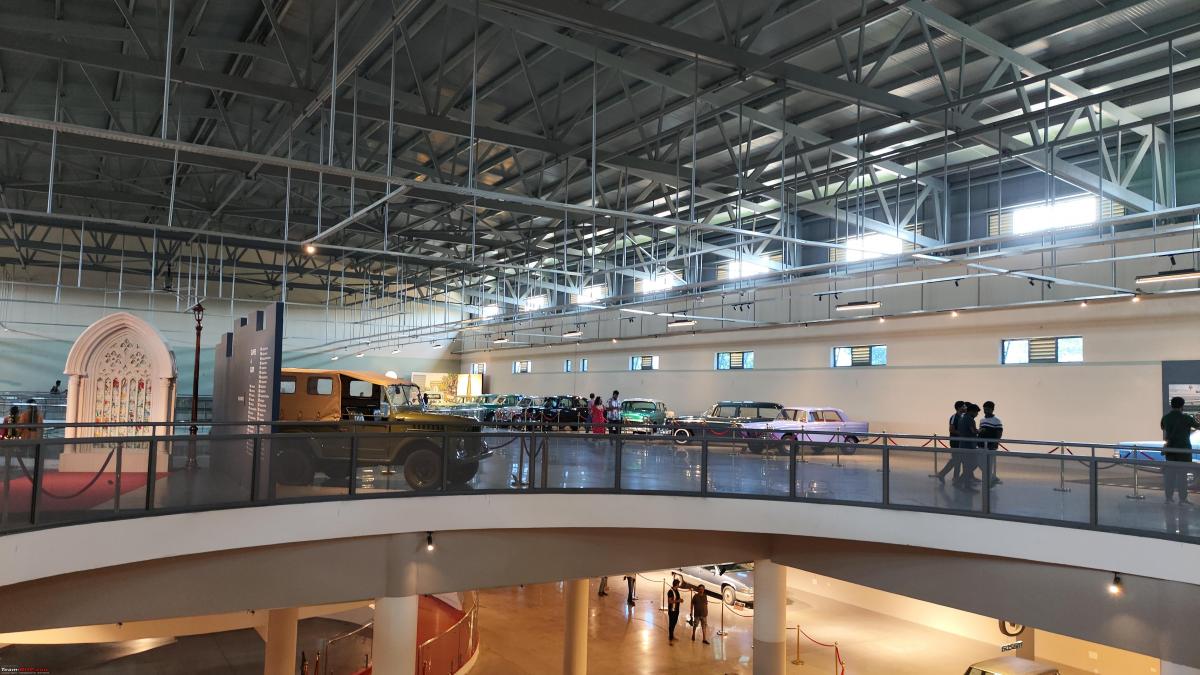
Spacious Hall - Additional View

Spacious Hall - Additional View

Walk away towards the Lower Level

Mysuru Maharaja's car - Daimler DE 36

C V Raman's Car - Studebaker Champion
Location:
Payana is located in Brahmaputra which is about 6.5 kms from Srirangapatna Town. If you are coming from Mysuru, then it's about 14 kms from the Mysuru Palace.

Continue reading about vsrivatsa's visit to the museum for BHPian comments, insights and more information.
News
Old Tata Estate runs & drives for first time in 9 yrs: Car restoration
We have located a Tata Sumo at a scrap yard and will be sourcing the power steering pump from it.
BHPian Sanidhya mukund recently shared this with other enthusiasts.
First drive in 9 years!
A major milestone in the project: The car runs and drives! This is the first time in 9 years that the car has moved on its own power. The mechanic managed to get the car going without the power steering pump. We have located a cannibalised Tata Sumo at a scrap yard and will be sourcing the pump from there, which will probably take a week. Meanwhile, the car was driven onto the elevated washing pit and the entire underbody and the rims were painted black.


After the painting was done, the mechanic took the car for a short spin around the garage:
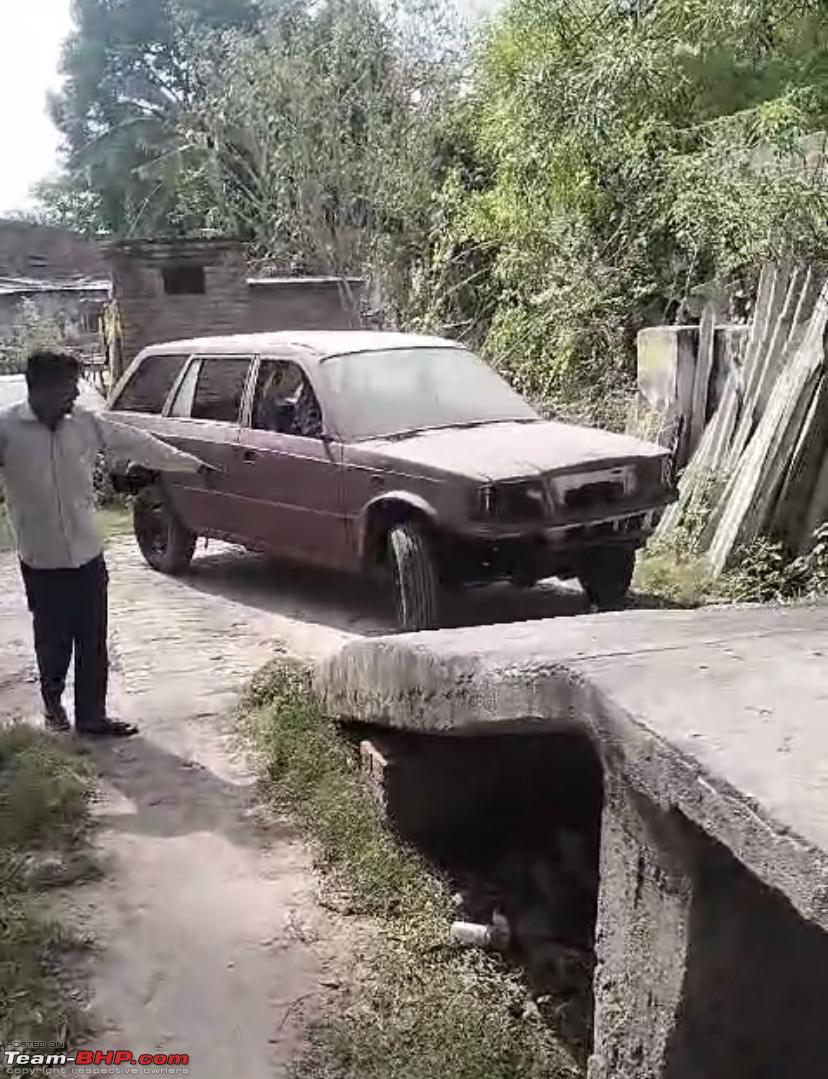

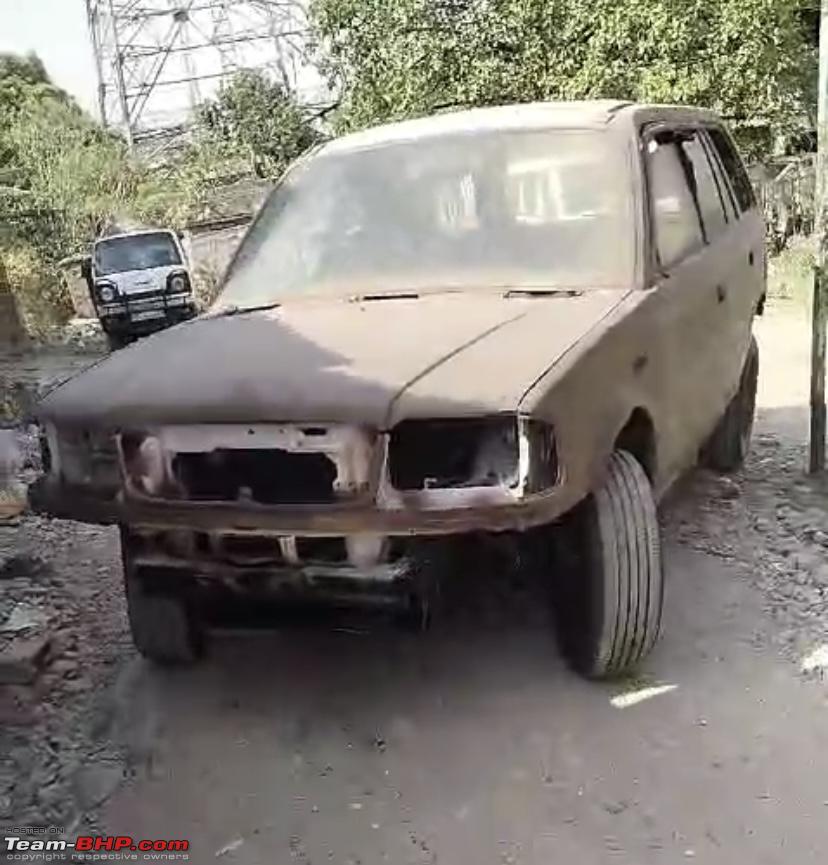

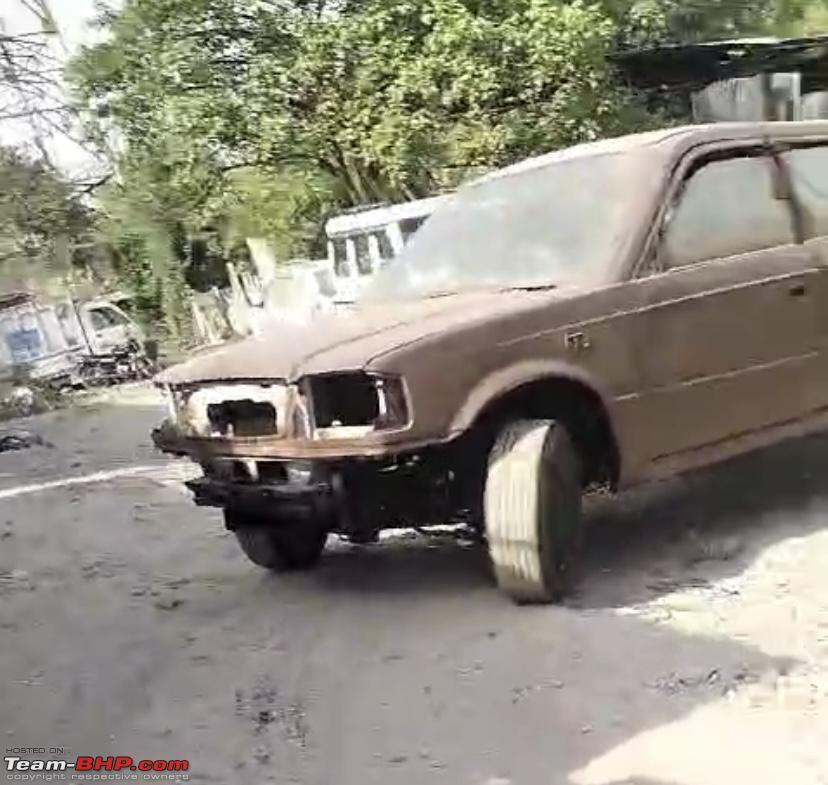

Next order of business is to send it to the panel beaters to cure the body line of any dings and blemishes. Post that, paint, electrical and interior will be done. On the mechanical front, we are left with Radiator replacement, sourcing the Power steering Pump and AC Compressor, fitting the fuel tank and fuel lines, and giving the entire car a good service (differential oil, engine oil replacement etc.). The car will hopefully be fully done by mid 2024.
A video of the car in action. Sorry about the poor quality; The video was sent by my mechanic as I was not present at that point in time.
Check out BHPian comments for more insights and information.
News
Visited the iconic Payana Vintage Car Museum: Here's my experience
Most of the cars are I guess bought from the descendants of original owners, second and third owners or picked up from scrap car garages.
BHPian Amyth_Prabhakar recently shared this with other enthusiasts.
Payana – From Cart to Car – The Vintage Car Museum.
This place has gained a lot of popularity ever since it opened for public last week and has become the most admired landmark along the Bangalore-Mysore Expressway, inundated by throngs of visitors including social media content creators who are in fact popularizing it to a greater extent by flaunting their videos and reels on YouTube. This place can be added to the ever-growing list of “Places to visit in and around Bengaluru for a Weekend Getaway”. This place has now become an ideal destination for a day trip and the new 6 lane highway makes it hassle free to visit and come back. I visited this place last week and here’s my share of experience.
Here are some videos. Watch them in 4K.
About the Vintage Car Museum:
This museum has decent collection of vintage cars, collected by Dr. Veerendra Heggade and is an extension of the Manjusha Museum located in Dharmasthala near Managalore.
Location:
Payana, is located on the Bangalore-Mysore Express way, and appears approximately about 7-8 kms before Mysore city and can be entered through the service road. Road connectivity is excellent, and the new highway makes it possible to maintain 3-digit speed and it takes about two hours or less to reach from the starting point of Bangalore-Mysore Expressway. Big advertising hoardings, promoting the museum can be seen a few kilometres before the destination along the highway and there is no way one can miss this. Depending on where you stay in Bangalore, it can either be a day trip or a half day trip, as the time to reach the expressway from different parts of Bangalore will have to be factored in.
Work in Progress:
Note that the work at the museum is still in progress (at the time of penning down this blog) and might take a month or two for this museum to become fully operational along with the restaurants. A small theatre construction was underway inside the museum and soon they might screen some vintage audio-visual shows. Open air amphitheatre was ready but there was no sign of any kind of entertainment . Seeing the demand, things might move even faster than expected and there is a high chance of the museum getting upgraded with more historic and iconic cars for display in future from around the world.
The Look and Feel:
The eye catchy construction, designed with ramps and a tyre shaped façade is what attracts and welcomes everyone passing by on the highway and makes one to stop over and have a glance or even click photos against the picturesque architectural backdrop.
Timings and Entry Fee:
The museum timings are from 9 AM to 8 PM on all days with a nominal entry fee of 50 rupees for adults and free for children below 7 years. There is a big parking lot at the entrance and can easily accommodate quite a good number of cars of the floating population. The entire place is very clean and well maintained.
Eateries In and Around:
The restaurant inside is not functional yet, however, there is nothing to worry as there are good and decent hotels located on the service road in close proximity to the museum and there is also one diagonally opposite to the museum, again on the service road. Visitors for now will have to travel a kilometre or two and take a U turn to get to the hotels located on either side of the highway. Since it is very close to Mysore, visitors can also find a lot of hotels on the Banni Mantap Road in Mysore and can have lunch/dinner at a restaurant of their preference.
Photo and Videography:
There is no separate fee collected for photography. However, professional videography with tripods and flash photography with pro cameras for commercial use is prohibited and requires prior permission. Shooting with drones also need prior permission. However, filming through cell phones, action cams like GoPro, Insta 360 and Vlogging cameras for personal use are allowed. Still photos with DSLR and Mirrorless cams are also allowed.
Our Experience:
We started at around 12 PM from Basavanagudi in Bangalore after a heavy brunch, hit the expressway through the NICE road and reached there by 2.15 PM, obviously at the wrong time of the day and it felt very hot. Initially I thought of carrying my gimbal, DSLR and Mirrorless cameras to shoot videos but later decided not to as moving around with heavy equipment in a hot weather is not easy, less flexible, drains energy faster and is prone to dehydration. Finally, we managed to shoot everything with our handy and compact cameras namely Samsung Ultra S24 and Xiaomi 13 Pro.
Although it was noon, we decided to pay a visit first and then have some refreshments later as our stomachs were almost full with no complaints. We clicked a few pictures at the entrance and headed to the reception counter, bought the tickets, and began our journey back in time at the museum. It starts off with a Herald car that was used by Dr.Veerendra Heggade during his prime time along with a poster of his alongside the car, followed by the evolution of wheels and a display of Internal combustion engine and its associated parts. Then starts the display of carts followed by cars. Most of the cars looked like big trucks to me. It normally takes about 30-45 minutes to cover the entire museum but if you are a photo freak like me, quite a good amount of time can be spent by taking pictures of cars in all possible angles.
This place is not air conditioned and the only source of cool air circulation are from the huge fans attached to the ceiling. Because of the spikes in temperature especially during this summer season, it felt hot and humid inside. The museum is thoughtfully designed as there are ramps to all levels of the museum, making it easier for people having physical disabilities to move around effortlessly and also makes it less strenuous to people of all age groups to visit the entire museum
Most of the cars are I guess bought from the descendants of original owners, second and third owners or picked up from scrap car garages. Some of the cars looked like they had been repaired, repainted, and restored.
Cars like, BMW, Benz, Chevrolet, Buick, Opel, Datsun, Mazda, MG, Ford, Citroen, Daimler, Willys Jeeps, trucks, Fiat, Hillman, Studebaker were found. I did not come across any Audi’s or Jaguar's and a few other popular and expected brands. Along with them were our Indian cars like Standard 2000, Contessa, Ambassador, Maruti Zen, Fiat Palio, Reva, Matiz, Dolphin etc. and I was surprised to see the Hyundai Verna (previous to fluidic generation) and the sturdy old Hyundai Sonata as we grew up seeing them. There were also some placeholders for cars that were yet to come in to the museum. There were some two wheelers (scooters and bikes) as well. Out of all, Hero-Honda-CD-100 is what stood out for me as my father had the same model and most of my childhood and in fact pre university college days were spent on that bike. With heavy heart he sold that bike in 2018.
Bonus Section:
There is a huge collection of ancient artifacts as well at the basement.
Conclusion:
Shot this just before I left in the evening at around 5.30 PM with more even lighting.
It was around 4 PM by the time we came out. I took a few aerial shots with my drone and finally went to a nearby hotel (Hari Govind, which is on the Bandipur road), had some food and finally headed back to Bangalore.
It was fun, informative, and educative in some cases. Overall, it was totally worth visiting it.
No more bugging. I will let the pictures to do the talking!!
The entrance:

A couple of photos taken at the entrance with different zoom lengths!






Entrance Ticket:


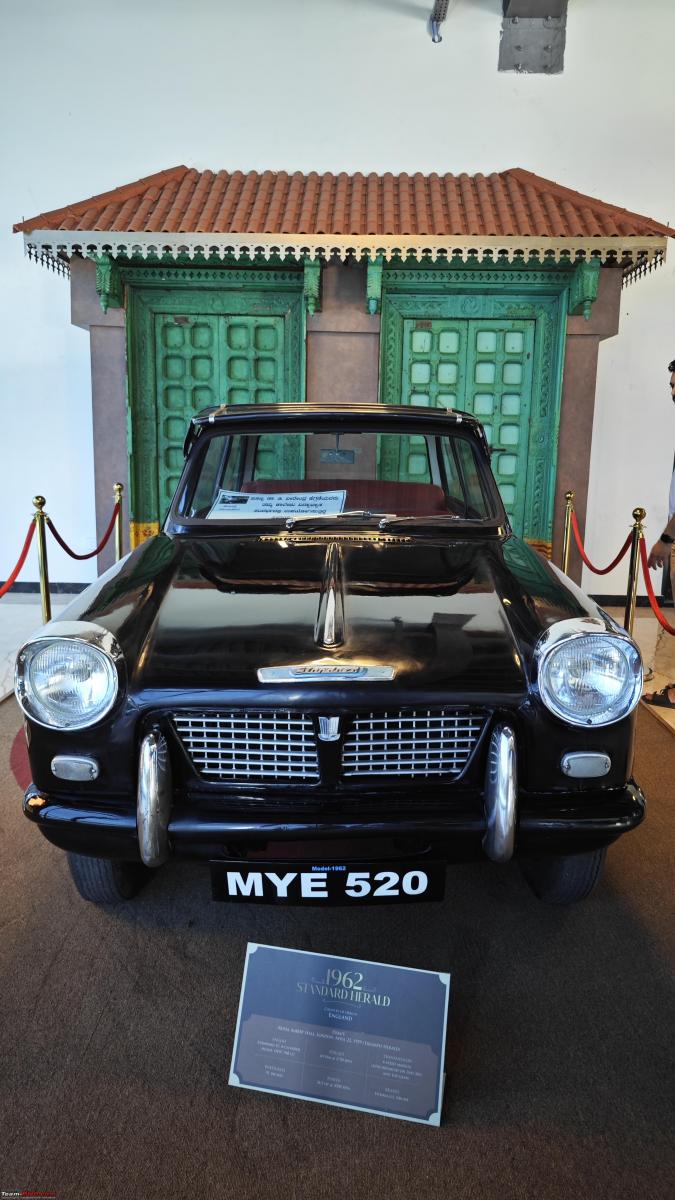



An old double Decker bus can be seen in the parking lot!
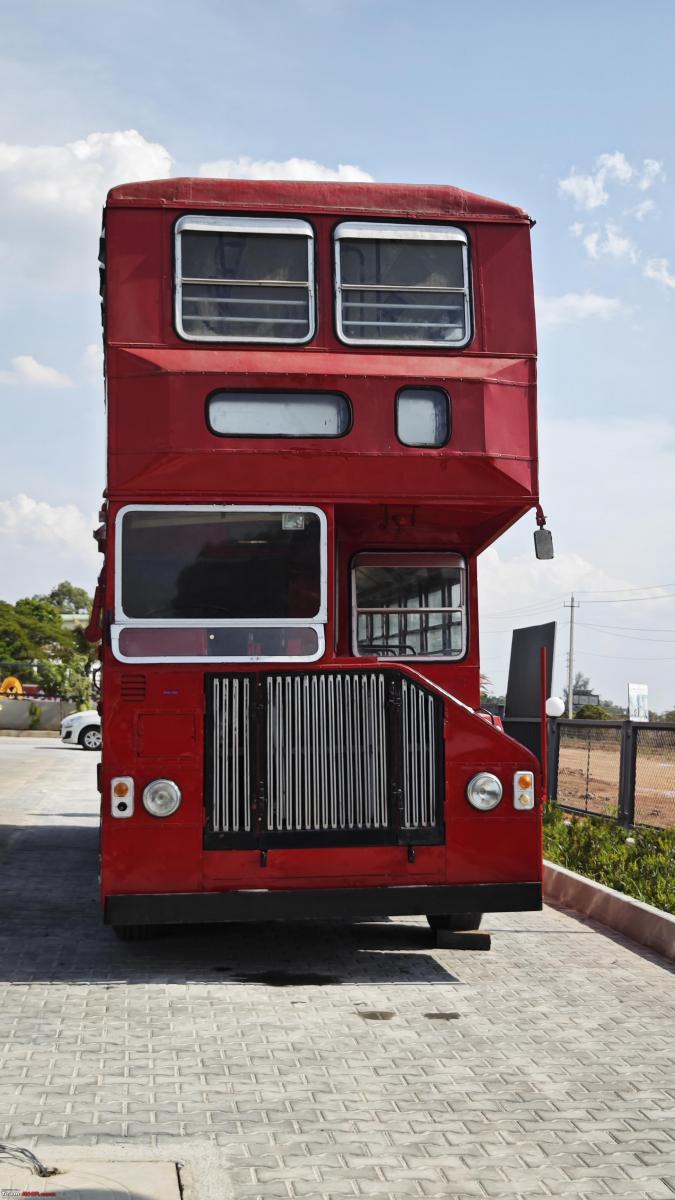

The Journey Begins:
An army truck parked at the entrance:



Continue reading BHPian Amyth_Prabhakaran's review for more insights and information.
News
Our Land Rover Series III officially declared a Historic Vehicle
A vehicle must be 40 years old to be classified as historic and I could not show the registration date as proof.
BHPian BlackPearl recently shared this with other enthusiasts.
Munchkin is now officially a "Historic" vehicle in the United Kingdom.
The process was quite straightforward. Since our Series 3 is an ex-army vehicle, the registration year in the V5C document was showing as 2000. A vehicle has to be 40 years old to be classified as historic and I was not able to show the registration date as proof.
So I had to get a heritage certificate from the British Motor Industry Heritage Trust and had to send the certificate along with the V5C to DVLA requesting for the tax class to be changed to historic.
They needed proof of MOT and insurance which I forgot to send. But they were kind enough to find out by themselves that the vehicle had MOT and insurance. DVLA updated the V5C and sent it back showing the tax class as historic.
Heritage Certificate

Updated V5C showing tax class as Historic

Check out BHPian comments for more insights and information.
News
25th Vintage Car Exhibition and Drive in Jaipur: Some fantastic images
I spotted some awesome classic cars like the Buick Dynaflow, Chevrolet Impala and Nova SS. I also saw the Packard - world's first air-conditioned car.
BHPian tbppjpr recently shared this with other enthusiasts.
25th Vintage Car Exhibition and Drive 2024, Jaipur: Revisit The Era of The Most Beautiful Cars
A photo and video walkthrough of vintage cars
The vintage car show has been organized regularly at Jaipur by 'The Rajputana Automotive Sports Car Club' in association with the 'Department of Tourism' (Government of Rajasthan).

Despite this popular vintage car show being regularly organized in my hometown, I could never make it to visit any of the previous events in the past. Mostly I missed it because I could not get the schedule information prior to the events.
This year I got the schedule information in much advance so I could plan the visit. I got my cameras ready and reached the venue, Taj Jai Mahal Palace, Jaipur at 9 am on 25th Feb.
The time was perfect since there was hardly any crowd that early in the morning which allowed me enough time to capture some fine details of some of the cars without disturbance. As time passed, the number of visitors started increasing being it Sunday. Later the venue was full of curious and enthusiastic people.
The venue, Taj Jai Mahal Palace, Jaipur:

Video description:
The 4K video (watch time: 8 minutes) starts with a visual story of a participant's vintage car struggling to take off for the group drive. The story is divided into three short parts mixed with the rest of the walkthrough portion which again covers three different sections.
- The first section is about the introduction which reveals fine details of a few of the participant vintage cars. Not only the exterior-interiors, but I covered mechanical details (only in the video) of some of the cars as well.
- The second section is about the roaring motors from the past. No petrolhead would like to miss the musical notes of those V6, V8, (V12?) motors.
- The third section is about witnessing the beautiful cars in motion. Some of the car owners were dressed in some retro-style clothing and some even felt like old film actors driving cars despite not wearing any retro styling clothing or makeup.
More than 60 GB of high-quality 4K 10bit 422 log profile video clips recorded on Lumix S5IIX are tightly edited into this 8-minute short video and composed with handpicked retro style music matching the mood, full credit to the musicians of those tracks. It took a lot of time to edit and re-edit, that's why I am posting it now after more than three weeks from the event.
There are a lot of cars and their details which I could capture only in the still photographs so going through the still photographs is not going to be a repetitive experience.
Prelude:
Jaipur, capital of Rajasthan - the state with a rich heritage. But the heritage is incomplete if we talk only about the architecture and history of different eras. We also talk about the mode of transportation in different eras along with various other elements to call history - the heritage.
Elephant Seat at Jodhpur fort:

Motor cars have been a key mode of transportation since the beginning of the previous century. The technology and designs of the cars kept changing over the period of time.
Today we have reached a threshold of reliability where cars refuse to break down despite all kinds of abuses we throw them in or whatever kind of regular-irregular maintenance schedules we follow. But they miss out on the wide differentiation of design characteristics of those old-timers. They start feeling monotonic and boring at times compared to the classic beauties.
Old walled city area of Jaipur full of monotonic cars:

Design difference between the cars of different generations:

But there was an era when the cars used to be so vastly different compared to others:

Not only in terms of designs but in sizes as well. Notice the proportions and size with such big differences:


Cars in that era used to be colorful. There was no space for the similarity. White, the most common colour in today's cars was a rare sight in those days along with the second most popular color silver which used to be chosen as exclusivity like any other color of that time.
Spotted two vintage cars with different shapes at a fuel bunk on my way to the venue:

I would have liked to cover all the cars (100+) but could manage to capture only a few out of so many who came from various parts of the country because the drive was also scheduled in the morning hours of the second and last day of the event. The rally was flagged off by the deputy chief minister of Rajasthan Diya Kumari who is also a member of the Jaipur Royal family.
Red carpet ready for the march past of the queens of the past:

I wanted to have some words with some of the participants but found a few of them already busy talking with others so did not disturb them, instead concentrated on capturing the beauty of the vintage cars. However, I am willing to record interviews of a few vintage car collectors in future exhibitions.
After observing those vintage cars so closely, I could feel a fraction of how much it takes to maintain them, it's a very demanding job, and one has to be highly dedicated towards this passion.

Let's begin with the photos of the event cars...
Bentley - Fully aluminium built car:
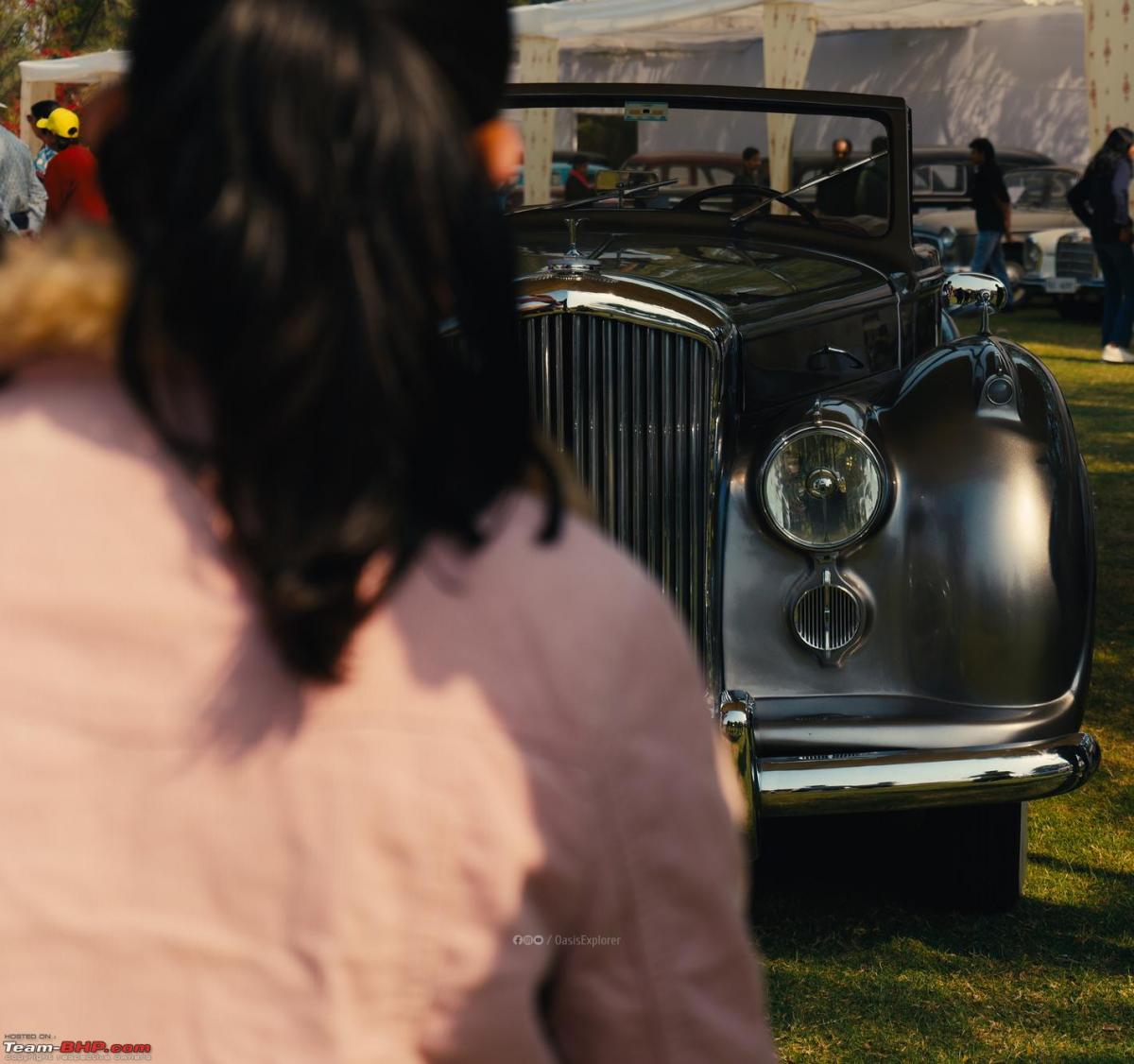


Stutz - Most predestined looking car, many fine details are covered in the video along with the exhaust note





Rolls Royce Phantoms:



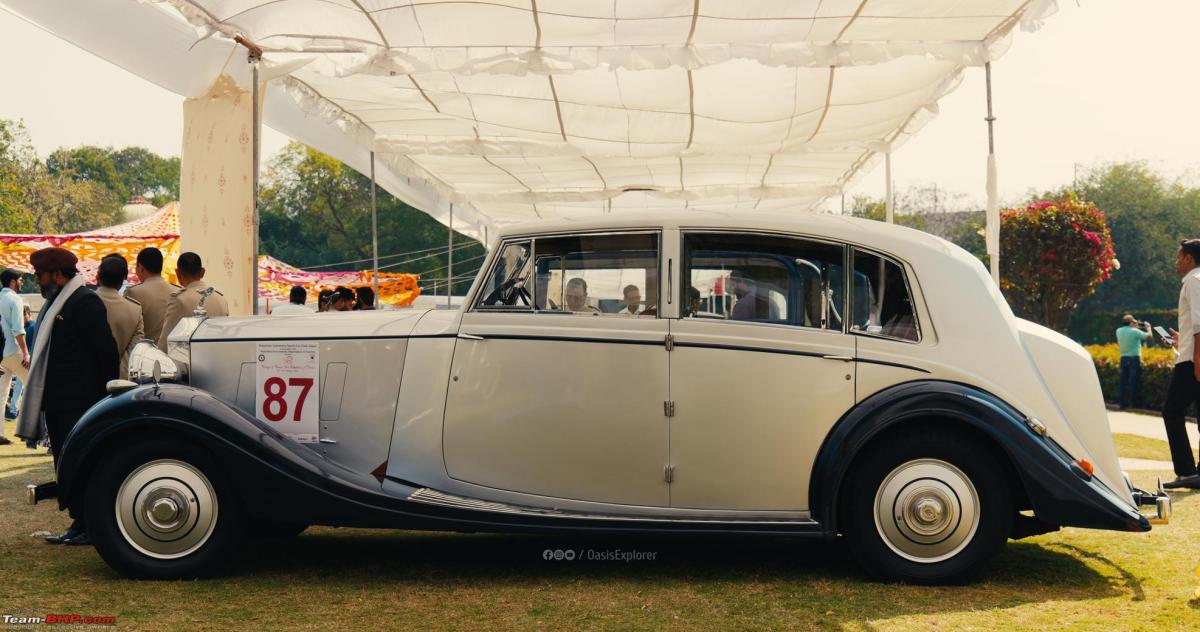



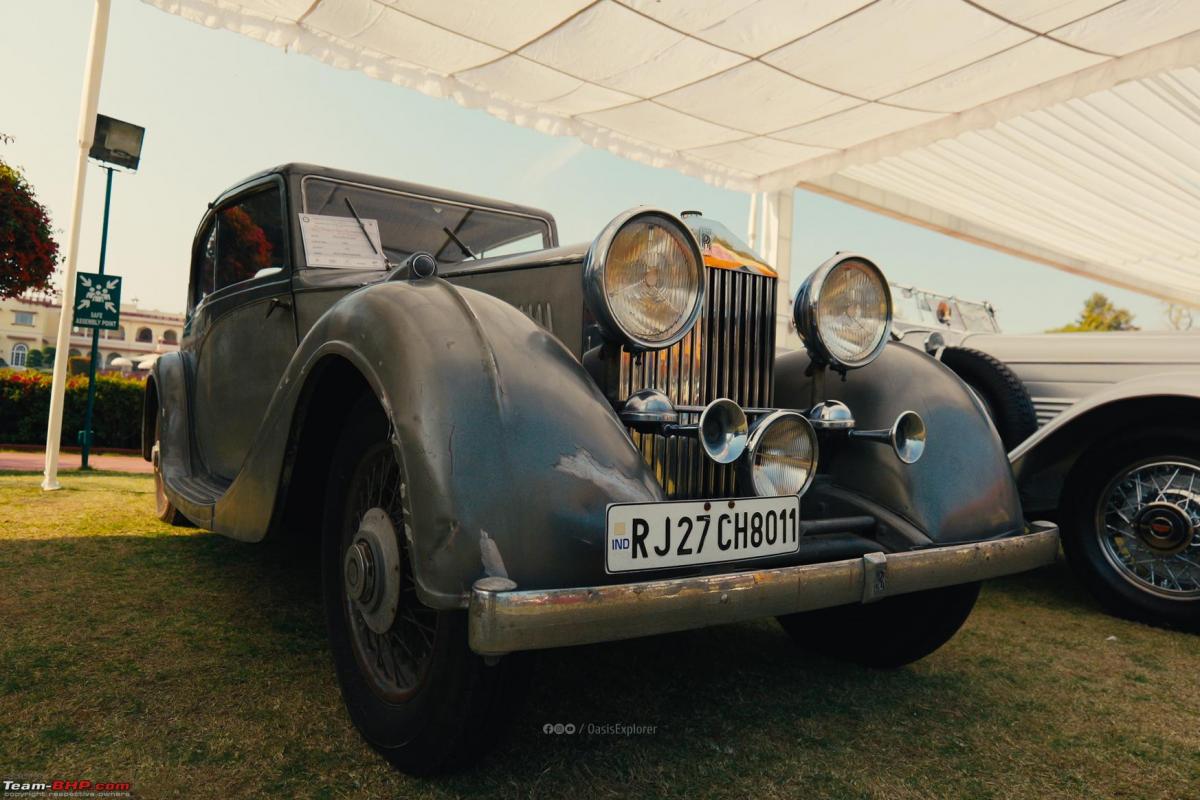

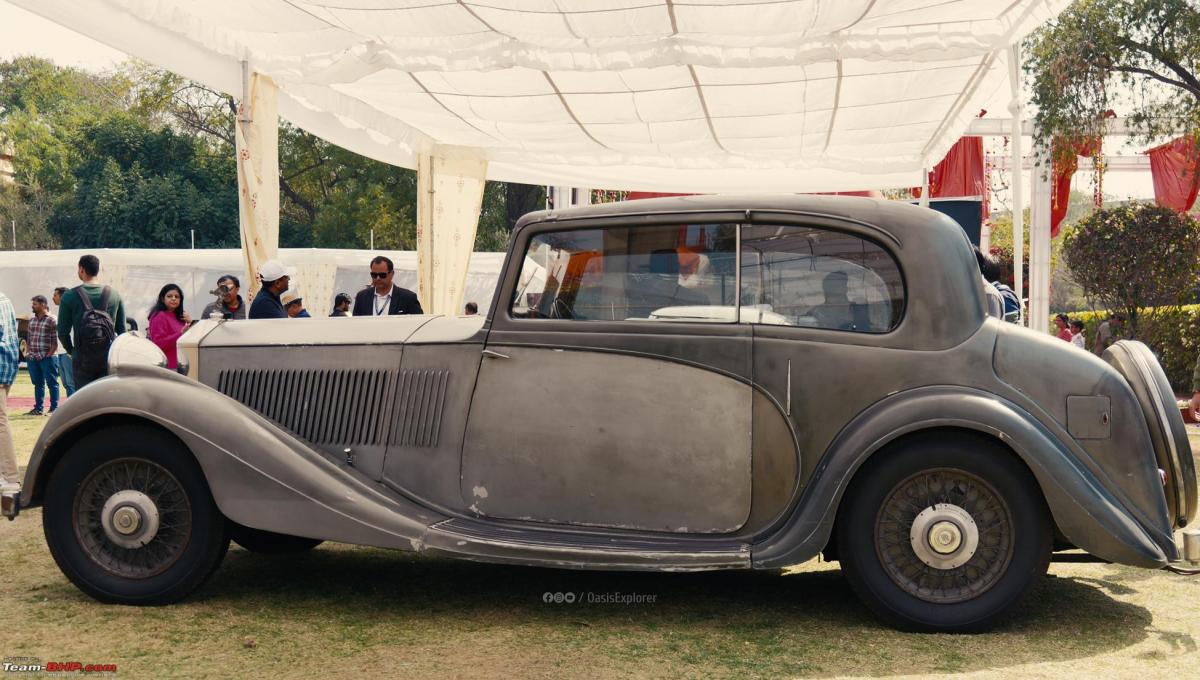
More amazing pictures of the event continue here.
News
Found a 1954 Pontiac Star Chief's artistic hood emblem at an auto event
It was completely intact, right down to the mounting bolts. It was designed to light up along with the headlights.
BHPian AKTransAM recently shared this with other enthusiasts.
What's your favorite old (or newer) car emblem? I've always been partial to older cars (the ones that predated the mid-60s muscle cars even) since they had some seriously well-crafted and artistic hood emblems that just aren't seen anymore (and haven't been seen in decades).
I'm a Pontiac guy, so obviously partial to that brand. I found this at the Portland Auto Swap Meet in 2022 buried in a bunch of random old Pontiac and Chevy stuff on a table and jumped on it. The Chief Pontiac Amber backlit 1954 Pontiac Star Chief hood emblem (that would be backlit when the headlights were turned on). It was completely intact when I found it, right down to the mounting bolts. I decided not to polish it, but leave him as is since he's survived for 70 years, scarred but still around and intact. I did put him up on a mounting stand and backlight him with LED bulbs.
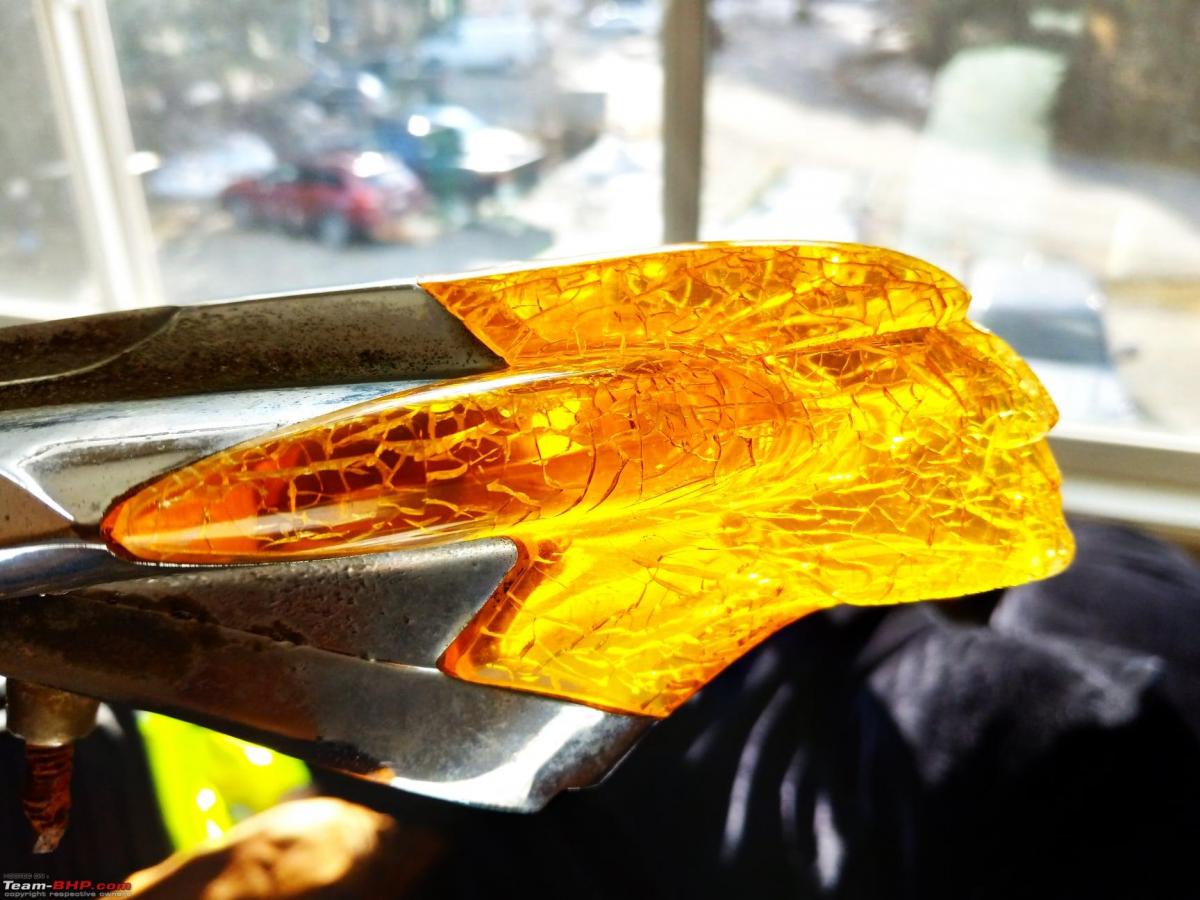
Backlit with LEDs

Here's what BHPian DicKy had to say about the matter:
Car hood ornaments have been rare on new cars since the millennium, only surviving in the aftermarket and the super expensive segments. Newer safety regulations and cab forward designs haven't helped exactly.
Can't go back to really old (40s,50s,60s) cars, but can definitely say for those cars that I grew up seeing.
Toyota Crown and Cressida (Mark II) hood emblems.
Cadillac hood emblem. Compared to the Lincoln's minimalistic one, this one screamed.. well... Cadillacy
All the above are flat/one-dimensional ones. Have soft corners for only a couple of three-dimensional ones. The leaping Jaguar and the Spirit of Ecstasy. But then again, it is because I like the Jaguar symbol, but not on the hood and I like the Spirit of Ecstasy because it is of Rolls Royce, not the design per se.
And last, but not the least. The Evergreen. The symbol of power and authority. The symbol of infamy. The target is to mow down the proletariats.
Check out BHPian comments for more insights and information.
- Tags:
- Indian
- Bonnet
- logo
- Old cars
- Vintage Cars
News
My 1972 Premier President: Purchase & ownership experience
Sounds like a 20th century mini-Ferrari!
BHPian vishy76 recently shared this with other enthusiasts.
1972 Premier President
What I like:
- Classy timeless looks. No other car from the pre-liberalisation era comes close to the 1100D for me in this regard
- Lusty engine mated to a very slick-shifting column shift-operated gearbox driving the rear wheels
- Routine maintenance and service costs are still very reasonable. Not a car that demands much attention in this regard
- Peppy performance with a lovely exhaust note. Sounds like a 20th century mini-Ferrari!
- Very good handler by 1970s standards. Tonnes of fun to flick around thanks to the low weight and RWD layout
- Very easy to work on. Routine maintenance, electrical troubleshooting and servicing are child’s play and most if not all parts are easy to access under the hood
What I don’t like:
- Parts are becoming tough to procure, especially cosmetic ones. Needless to say, they also cost a bomb with most stockists taking advantage of the scarcity
- Quite the rust magnet. Needs special attention and care to keep corrosion in check. The paint quality wasn’t great from the factory either
- Safety is non-existent by today’s standards. No seatbelts on this 1972 President either. A minor hiccup if you plan to daily it
- Interior space and ergonomics are typically Italian (read: very cramped). Not a car you bought for being chauffeured around in
- Some jobs can’t be undertaken by your average neighbourhood mechanic. Needs a seasoned old-timer who knows what he’s doing
- Prices are shooting up to unbelievable levels. I don’t think it will even be worth buying one 2-3 years down the line
Backstory
My family shifted to Bombay in 2009. I still remember the first time I came to Mumbai. Merrily got off at LTT, and the next thing I see is my dad trying to hail a cab. The only cabs I was used to seeing then were the usual Tata Indicas and Indigos. The word Fiat only meant the Uno a friend of mine used to own when I was in Senior KG and a Sienna, a gentleman in my apartment owned when we were in Ahmedabad.
The sight that greeted me was quite strange then. A beaten-up black and yellow car pulled up with a roof carrier. The taxi driver gingerly opened the boot but also had a long length of rope in his hand. The rope would be put to good use since the boot had a larger-than-life cylinder in it and could only squeeze in 2-3 soft bags. The rest went on the roof carrier. When he opened the rather small doors, I was again greeted with another spectacle. The front had a single-piece seat (which I later came to know was called a “Bench seat”). The dash didn’t exist! It was simply a protrusion on the firewall with a small cavity on the passenger side which formed the glovebox. Ingress was tough, to say the least. My dad insisted I sit in the middle at the front or the back but nowhere close to the doors at any cost. Closing the doors took 2-3 attempts (are you even in a “Fiat” taxi if you manage to get the door closed right on the first attempt?)
The next 30-35 minutes were probably the scariest ones in my life. My innate curiosity was replaced by horror as the taxi driver was weaving through Mumbai traffic as if it were the last day of his life. Half of my brain was worried about the bags atop the roof carrier while the rest had gone into survival mode. I am not a very courageous soul in all honesty. I loathe flying on a turbulent day, absolutely abhor rollercoasters and in general detest when someone else drives fast with me in the passenger seat. However, now that I have an 1100D/President/Padmini myself and know how “good” the brakes are, I think my fears no matter how childish & illogical weren’t precisely unfounded.
That one drive in a Fiat taxi had left such an impression that I almost never sat in one again for 2-3 years. The only Fiat taxi I would ever sit in would be the one belonging to a friendly taxi driver who used to operate out of a stand close to my home. Tripathiji as he was called, had a rather well-kept Padmini largely devoid of the snazzy stickers and chrome bits one would expect of a taxi. What the car did have were whitewall tyres, something which I still remember almost 15 years later. Tripathiji was my grandfather’s trusted driver. He would always drive at a steady pace, never cut lanes and never brake late, quite an exception for a Mumbai taxi driver, just like his Padmini. My dad would ask him to take us on drives to various parts of Bombay back then, since our Corsa had been shipped by container from Chennai to Mumbai & was taking ages to arrive.
Some observations I made as a kid sitting at the back and later taking the “Fiat shotgun” position (middle one between driver and passenger) as I like to call it:
- The gear lever was oddly placed, to say the least. I had roughly figured out the positioning of gears in a floor shift car but was never able to do so for a Padmini. This would hold true up until only a year back
- The car had a very prominent whine when accelerating in 1st. Especially, prominent as taxi drivers would take off like a rocket from traffic lights
- It looked & felt “old”, but it did have guts. In the right hands and with generous gear shifts, the Padmini could actually keep up with Mumbai traffic quite effortlessly.
- The doors were a sore point always. Never aligned correctly and always needed 2-3 attempts to shut. One of the reasons why my dad never allowed me to sit close to the doors
This was pretty much what I would expect of every Padmini I ever sat in (whenever I did sit in one that is). However, one fine day it did change. My grandparents had come down from Vadodara and Tripathiji was unavailable. We hailed a cab from the same stand, but when I got in, I was in for a rather pleasant surprise:
- This “Fiat” didn’t have a single seat at the front. Two individual (bucket) seats with headrests, almost like a Maruti 800
- The gear lever was where it was supposed to be (floor shift)
- The car had AC as well though it was obviously never switched on
- Ran a lot smoother and felt more “car-like” to ride in than the cruder Padminis I had ridden in earlier
January, 2023
My family was based in Baroda while I was pursuing engineering in Bombay. Life was going well.
BHPian Beemerbug006 is someone I have known even before he joined the forum. Since I was in Bombay for my higher education, I never missed an opportunity to visit him at his residence in Shivaji Park, Dadar. Apart from owning a lovely Maruti Zen, Nikhil is a very familiar face at classic car meets owing to his photography skills. The presence of skilled old-timer mechanics known to him at Shivaji Park meant he would often be entrusted with fixing an old car or two over a weekend. I would also take the opportunity to visit him at this time and ride in one of these.
On one such unassuming weekday in Feb, I landed at Shivaji Park post-college. Nikhil didn’t waste much time and immediately took me to his trusted auto electrician. And there she was. A white Padmini Deluxe BE is being worked on by a rather grumpy old man. After some prodding, I was told the car had been procured by a friend of Nikhil’s. He had been tasked to bring it back into running condition, after which the owner had “other plans” for it.
On the surface, the white Padmini didn't have much going for it. Although the “aam junta” would give it curious looks on the road, I could imagine it attracting attention for all the wrong reasons at a Fiat meet. The wheels were tastelessly sprayed in black and so were the pillars. The rear end was jacked up to massive proportions, giving the car a very awkward stance. On closer inspection, the paint job was a massive botch-up. Overspray at every possible nook and cranny, paint overrun visible from a mile away and missing bits of wiring.
After the electrician (who was seemingly frustrated at this point) had reinstalled the starter, we jumped in and went for a spin. Mind you, this was when the car didn’t have any sort of insulation on the floorboard. On a rather humid Bombay evening, we were sweating it out in the Padmini. After Nikhil was convinced the car was running fine, I was told to take the wheel and learn.
Hopping into a Padmini and driving off is not something you can do if you are only used to driving ‘traditional’ cars, no matter how experienced you are. The organ-type ABC pedals, judicious amounts of play in the steering, and the non-vacuum assist brakes (all four drums if I might add) are traits which can pose a serious challenge at first. However, after about 3-4 km of driving, it seemed I had gotten used to the car.

Over the next month or so, the car’s charm got to me. I never quite understood what it was. Maybe it was the back-to-basics driving feel, maybe it was the fact that there could never be an idle moment when driving the car, or maybe just a good old Italian character. I had fallen in love with it. So much so, that I casually pitched the idea to my old man who gave me a go-ahead for the same.
The Hunt
The initial budget was pegged at a rather conservative 70k. I checked out a couple of examples and was less than impressed. I almost sealed the deal on a 1965 1100D, but later realized there was too much tinkering involved to bring it back to shape. The car was also missing most if not all of the cosmetic bits which should have made it an 1100D.
After this rather uninspiring hunt, my dad gave me the go-ahead to up the budget while also setting some stringent criteria:
- Should be a petrol column shift. Diesels simply weren’t going to make the cut
- Should have valid paperwork
- Should be a fundamentally solid car. Minimal rust, no LPG/CNG BS conversions, no mechanical jugaads or hack jobs
- Should be a car which needs TLC, but not a grounds-up restoration immediately
Budget: 1.3-1.5L
Post this, two cars appealed to me on FB classifieds. The first one was a 1990 Padmini listed for 1.2L. The seller wasn’t very keen on making a sale. When I told him I would send someone to check the car out, he made excuses that the car had gone for a minor touch-up bla bla. Decided to put this on hold.
The second car was quite an interesting one. The ad didn’t explicitly mention the car's name. It simply said, “Old is Gold 1973 all-original parts clear paper up to 2025”. The price listed was also a very random number. However, I still decided to DM the seller. Nikhil identified the car as a Premier President and we decided it would be prudent to send a friend and Fiat veteran Russel to check the car out on my behalf.
Russel gave the car a thumbs up. He opined that there was minimal rust barring the cross member, the paint job was in above-average condition and the car in general felt genuine.
After a lot of back and forth with the seller on the phone, we agreed on a price. While I had stretched my budget by a fair margin, Nikhil and Russel were both of the opinion that it was worth it for the car I had landed wasn’t a Padmini, but a ‘President’.
The Delivery Saga
I had wired a token amount to the seller and had the ad taken down. I promised him that I would come down in the next week or so, see the car in person one final time and make the final payment.
The next week, on the 21st of March, 2023, a very close friend and fellow BHPian Atharva and I hopped into his Vento and made quick progress towards Pune. The day was an odd one because it had rained cats and dogs in the morning and showers didn't subside until we crossed the Lonavala ghat section. The plan was simple:
- Reach the seller’s location. Inspect the car, make final payment and take delivery
- Based on the car’s condition and if we had enough time, drive it back to base with the Vento as backup or load it on a container and have it sent to Bombay
The plan (in theory at least) was very simple. Post reaching Pune however, we were in for a rude shock:
- Firstly, my outstanding navigation skills meant we somehow ended up about 20 km from the intended destination
- Secondly, while coming down a flyover, the Vento TDI decided to throw in a surprise by springing up an overheating warning.
After descending, we parked to the side, only to find the coolant boiling over. Having dealt with TDIs numerous times on VWs, the sweet smell of fresh coolant from the timing belt casing told me it had to be the water pump that had given up.
The seller was not very happy to learn about all this. Somehow, I managed to beat all odds and reach the seller’s place while Atharva limped to the closest FNG with his Vento.
After an inspection and a short spin in the car, I took delivery. The fuel gauge read between ¼ and ½, with the seller also assuring me that the car would easily make it to the outskirts of Pune. Initial impressions were not outstanding:
- Most of the original trim was intact including the grille, the speedo, interior grab straps and even the ashtray
- The alignment was screwed by a very good margin
- Front shocks were done, if not the entire front suspension. The car was bouncing like a pogo stick over less-than-ideal Pune roads
- Sounded like a truck thanks to the broken exhaust plumbing
- The brakes were a far cry from the white Padmini I had driven in Bombay
I didn’t really have time to think about much else.
All I knew was that:
- I bought myself a 50-year-old Fiat
- I had to somehow figure out a way to take the car back to base with me while also finding a way to take Atharva and the Vento home
I drove the President down to the FNG where Atharva had taken the Vento. The bad news was in store. The water pump would only be replaced by 23rd March since the 22nd was a holiday. Out of frustration and impulse, we both hopped into the Fiat and decided to aim for Bombay. It was around 1.30-2.00 pm.
We had somehow managed to navigate the worst of Pune traffic and make it to the outskirts. The President was to climb a flyover on the Katraj-Kondhwa road. All was going well when suddenly, the car decided it didn’t want to obey throttle inputs anymore. A bit of sputtering followed and then imminent death. I was clueless. Fortunately, Russel sent for a towing van with a rather enthusiastic driver. He took 1.5 hours to reach but charged a mere 2200 bucks for a 20 km tow across Pune to Russel’s garage in Khadki.
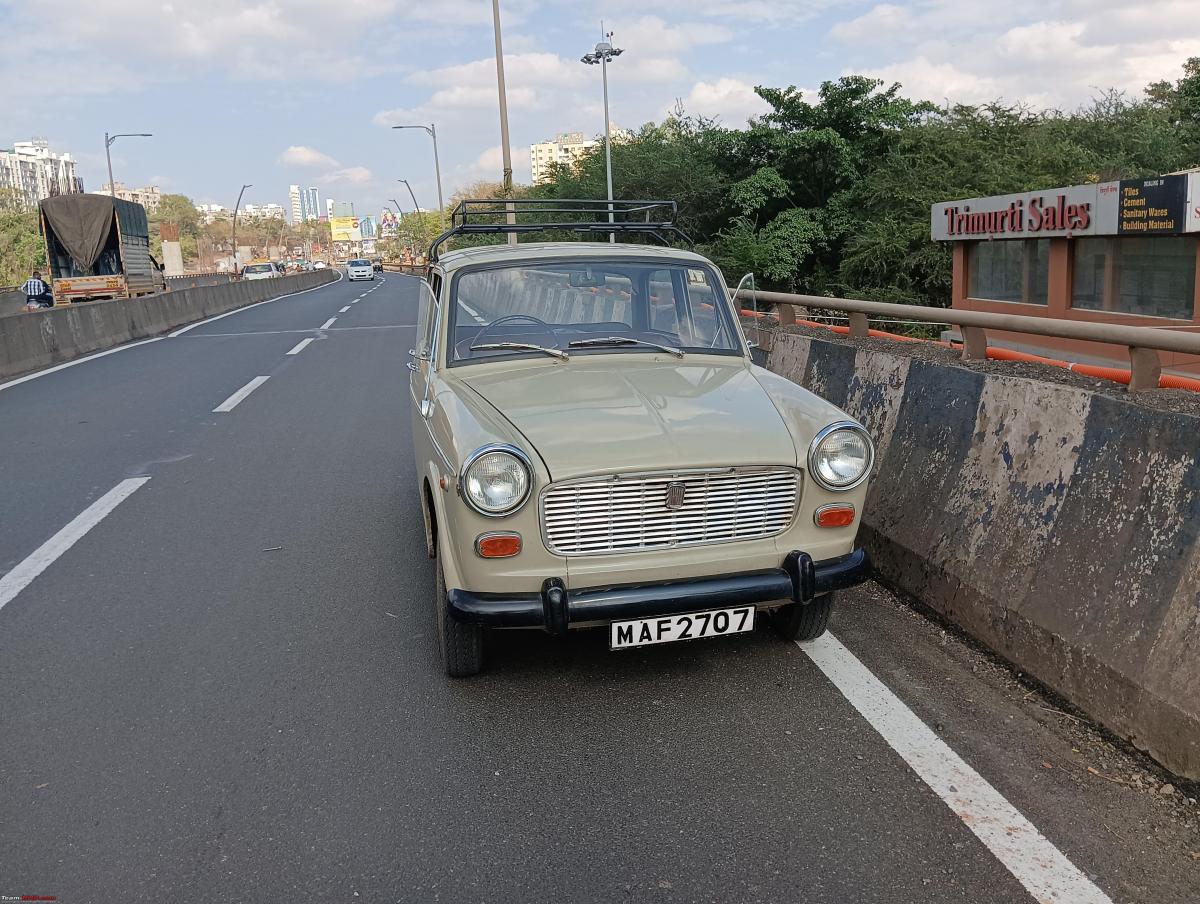

At the garage, we removed the float from the fuel tank, only to find out that there was no fuel in it. Trusting the fuel gauge had been the biggest mistake I had made, it seemed. Russel also pointed out a couple of other things that needed attention including the radiator hoses. However, he opined the car would make it to Bombay if we just fueled up and left.
It was already 5 pm. We were exhausted. My risk-taking bandwidth was over. Atharva took a cab back to base, while I decided to give myself some time and retire to a family friend’s home in Pune. The car was fueled up and taken. The next morning, I decided to drop the car off at Russel’s garage and leave for Bombay. I asked him to do whatever he deemed necessary to make the car mechanically reliable. We decided to do the following:
Replace the entire exhaust system
Replace the spark plugs
Set the tappets, tune the carb and set distributor timing
Get new wheel caps (got Padmini ones)
Get the brake lights and front indicators to work
Remove the roof carrier and antenna
We also wanted to replace the crusty cross member, but it wasn’t in stock. All in all, Russel did a very good job considering the shoestring budget I had given him. I gingerly asked him to load the car up in a container and have it shipped to which he disagreed. He was of the opinion that the car could make it to Bombay effortlessly.
After some back and forth over the same, we found a middle ground. Russel would drive the President down to Lonavala, following which I would take over. The date was set, 27th March, 2023.
D-day (take 2)
I once again left for Lonavala post-college with a trusty friend (no prizes for guessing who). We reached Lonavala, met Russel and went over all the work that had been done. Post a refuel, it was time to hit the highway, or actually the expressway.
While the initial plan dictated taking the President down the ghat via the old Bombay-Pune highway, the steep slopes we encountered on the way to Lonavala made me decide otherwise. In the end, I had barely driven the car for 15-20 km and there was no clarity on the overall integrity of the brakes or the suspension.
All this meant I made a last-minute decision to take the expressway. As we exited Lonavala, quite a few things were going through my mind. How would the car respond as I pushed it to higher speeds? Would the brakes hold up? Would the engine temp remain in control at higher speeds?
I joined the highway and merrily started filtering through slow-moving truck traffic. I saw a couple of gentle left-hand sweepers ahead and decided to push through them to see how the car would respond. To my surprise, the President played along quite well. The short 4th gear, RWD layout meant the front wheels only had to steer the car and the short wheelbase meant I was pushing the car into corners at 50-60 km/h and thoroughly enjoying it. Yes, the alignment was still not perfect and I had to practice due diligence over expansion joints thanks to the bad front shocks.
What was even more surprising was the fact that the car didn’t really feel strained at 60-70 km hr (48hp isn’t a lot of hp). Engine temps had dropped below 70 degrees centigrade at 60-70 km hr. The President seemed to be happier than even I was. After a single halt to check for any leakages from the radiator, I put some nice music on my trusty old BT speaker, opened both front quarter glasses and cruised towards Bombay.


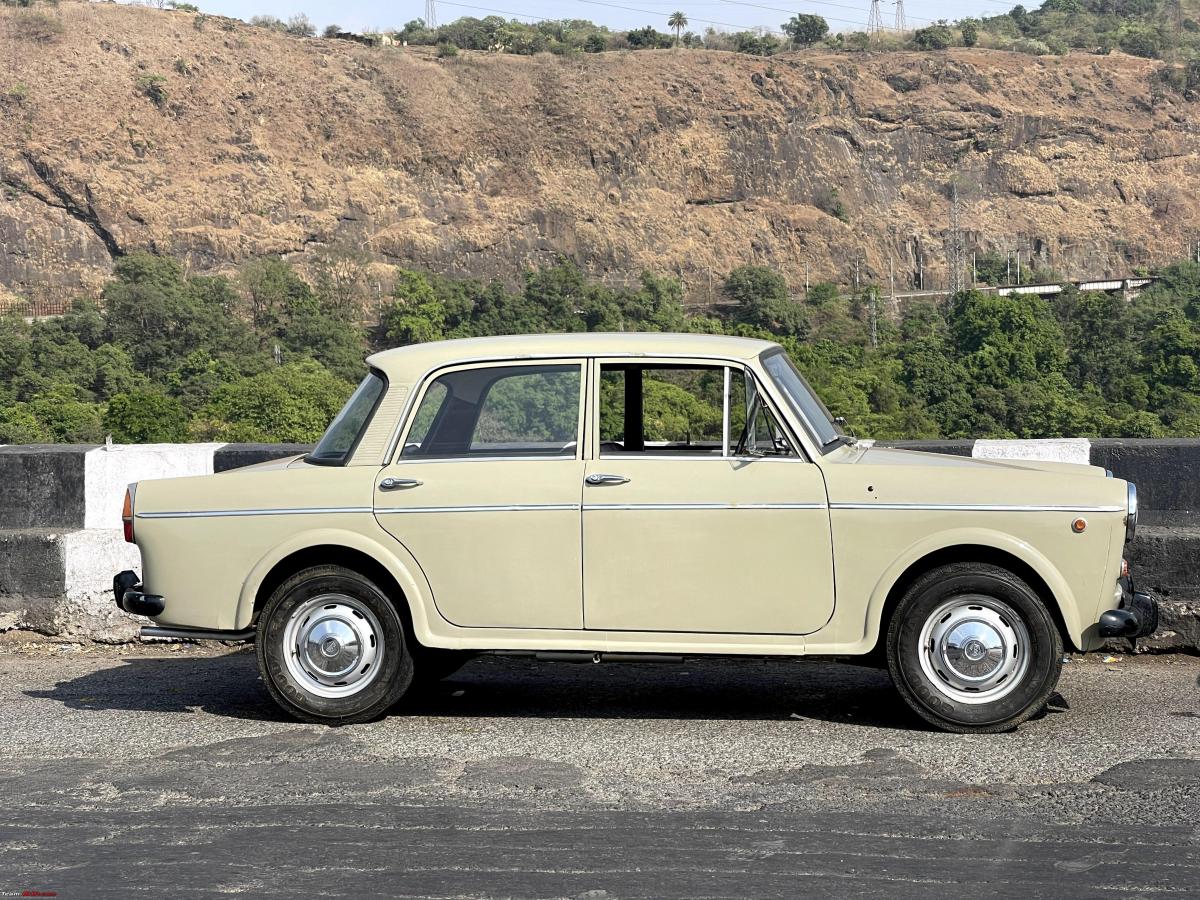
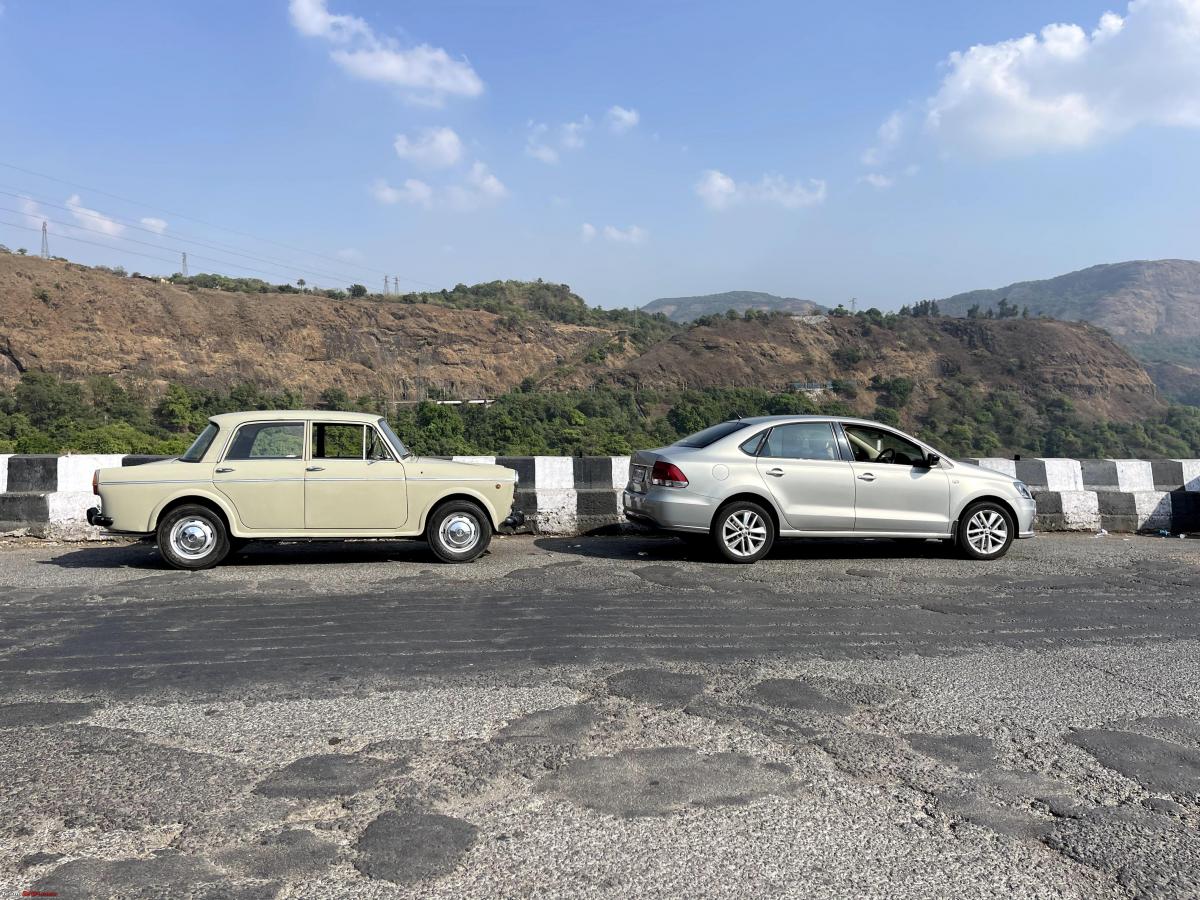
Continue reading BHPian vishy76's ownership review for more insights and information.
News
30 vintage cars take to Mumbai Coastal Road on inauguration day
The high-speed corridor along the coast stretches for 10.58 km and connects Marine Drive to the Bandra Worli Sea Link.
The Mumbai Coastal Road is now open to the public. Officially known as Dharmveer Swarajya Rakshak Chhatrapati Sambhaji Maharaj Coastal Road, traffic on the high-speed corridor started flowing earlier today after the south-bound phase was inaugurated by Chief Minister Eknath Shinde and Deputy Chief Ministers Devendra Fadanvis and Ajit Pawar on Monday.
The coastal road will be open from Monday to Friday between 8 am and 8 pm. The pending construction work will be completed during night hours and on weekends.
The high-speed corridor along the coast stretches for 10.58 km and connects Marine Drive to the Bandra Worli Sea Link. Currently, a 9.5 km section is open to the public.
A fleet of 30 vintage cars took the newly constructed coastal road on the day of inauguration. Among the classic beauties were several Mercedes-Benzs, Bentleys, Chryslers and Cadillacs.
Source: Indian Express
News
The Oberoi Concours d'Elegance - Udaipur, 2024
The event is of course the brainchild of none other than Manvendra Singh Barwani, who needs no introduction. He has singlehandedly put India on the concours map, and is credited with constantly innovating year after year to keep the events relevant and viable.
BHPian karlosdeville recently shared this with other enthusiasts.
As the collector car circuit in the country grows from strength to strength, and with more and more people wanting to be a part of this increasingly elite circle, an empty slot on the Concours calendar in India was waiting to be filled. With much fanfare and excitement, the quickly familiar Oberoi Concours d'Elegance was announced to be held in February 2024.
This fabulous poster was released, by noted artist Tim Layzell. The featured car was none other than the Jodhpur Delahaye, with the stunning backdrop of the Udaivilas. The Holkar Bentley is seen in the background
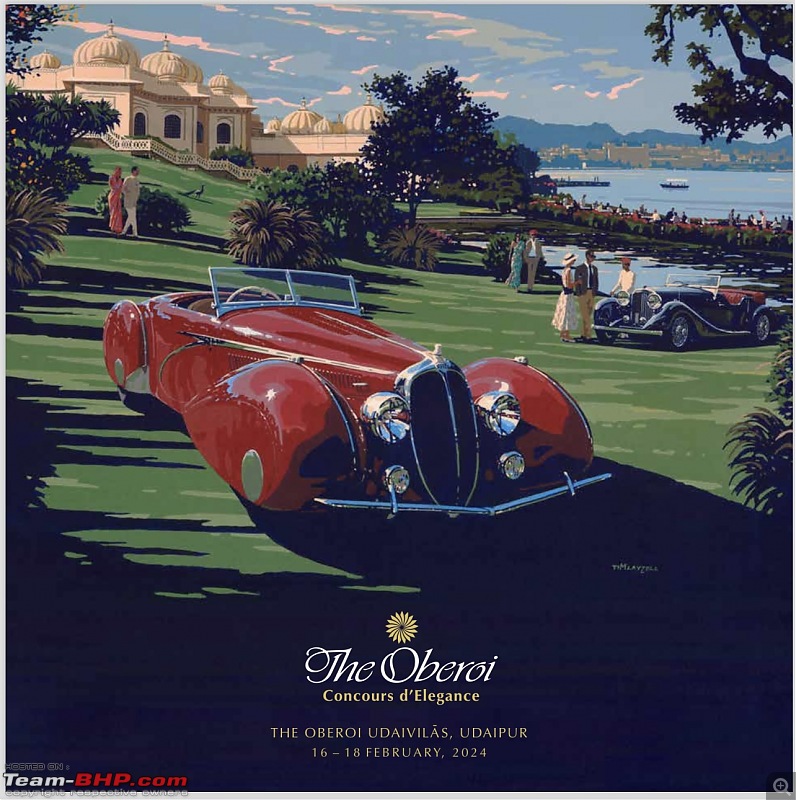
The event coincided with the Oberoi Hotel group's 90-year celebrations, which would be a perfectly suited partner for an event of this calibre. The venue selected for the inaugural event would be the stunning flagship property, the Oberoi Udaivilas in Udaipur. A former hunting ground for the royal family, the hotel is rated amongst the best in the world, and with a quick stroll around the property and interactions with the most hospitable staff, one can immediately understand why.
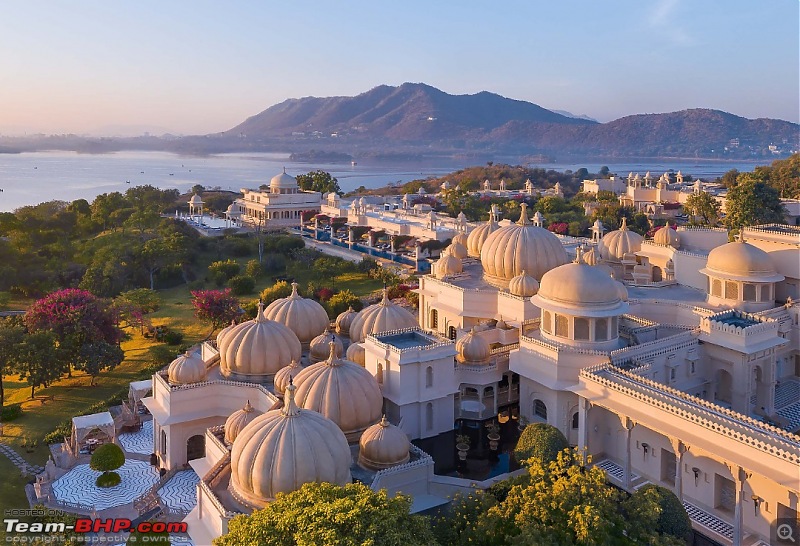
The event is of course the brainchild of none other than Manvendra Singh Barwani, who needs no introduction. He has singlehandedly put India on the Concours map and is credited with constantly innovating year after year to keep the events relevant and viable.
This new concours though is thanks to the commitment and participation of Arjun Oberoi, Executive Chairman of EIH Ltd. and a passionate car guy himself. He has competed in events locally and internationally in the past, and this no doubt makes all the difference.
A special mention has to be made for Chief Judge Sandra Button, the Chairperson of the Pebble Beach Concours d'Elegance, to support events in India over the last so many years. The suave Simon.Kidston took over the duties of the convenor. The full impressive list of judges is available on the Concours website.
Without further ado, here are the classes and participants. Car details, owner names, and class descriptions and order are as appearing in the Concours book, do forgive oversights if any. A special thanks to Makarand Baokar, Sanket Patel, Nathan Fernandez, and Rohit Johnson for helping out with some fantastic shots.
Class A
Motoring for the Masses: India.
High production of low-cost cars sold in India from 1910 onwards.
A1: 1930 Ford Model A Phaeton, Abdul Hameed Ghani.
The owner tells me it is a transition model still showing some older features, and was acquired from the original owner, Mukundgarh.
A3: 1946 Hindustan 10 Saloon, The Household Department, Jodhpur Palace.
This delightful, rare car has been owned by the palace from new and has been freshly restored.
A4: 1948 Morris 8 Series E Saloon, Hormuz Asphandiar Dadachanji
My favourite, is the Dadachanji family Morris has been with them for over 50 years, travelling the length and breadth of the country. It remains in regular use even now.
To see the album with 50 years' worth of images of the Morris made my day.
A5: 1956 Fiat 1100 103E Saloon, Karl Bhote
Amongst the earliest of the centre-light cars, this one was all original and in careful storage for decades, and she got ready just in time. No effort was spared by the Engineer Brothers on this one, and hopefully, a restoration thread will follow in due course.
A6: 1983 Maruti 800 hatchback, Maruti Udyog Ltd / Cyrus Dhabhar
A most significant car, this Maruti is the very first car whose keys were handed over by Prime Minister Indira Gandhi to the first owner Harpal Singh in December 1983.
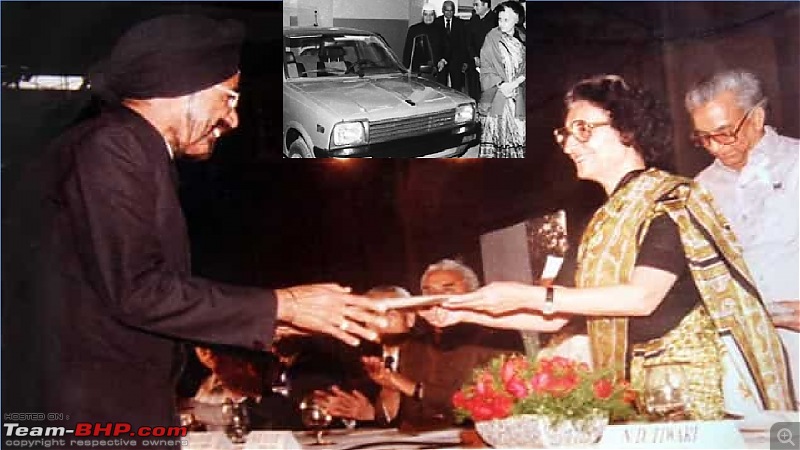
It remained with the family till the owner's demise, after which Maruti thankfully bought it back and restored it very well. Kudos to Maruti for acknowledging and investing in this significant car, and most importantly displaying it.
The car is chassis number 14, I'm told that 13 pre-production cars were built and this was the last (chassis number 13 never having been made
A7: 2015 Tata Nano hatchback, Rustomjee Jeejeebhoy.
A surprising entry, there is no denying the significance of this modern-day people's car.
Continue reading karlosdeville report for more insights and information.
Pages



